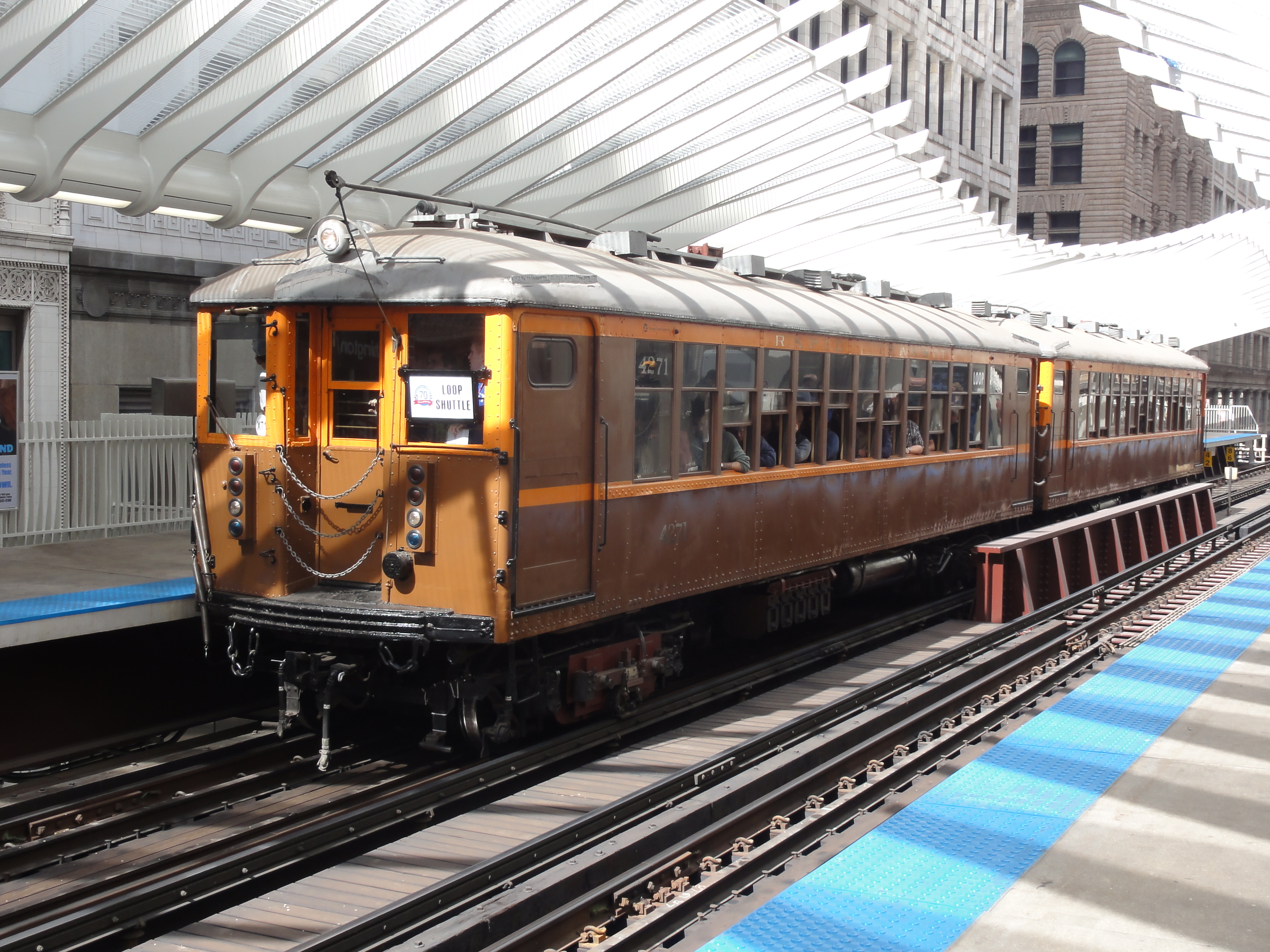On Sunday the CTA celebrated the 70th anniversary of the launching of the agency as the owner and operator of what is today’s CTA bus and ‘L’ train service. The festivities included live music by subway buskers, vintage bus and train rides on the agency’s Heritage Fleet around the Loop, and an appearance by Lee Crooks, the voiceover artist who records the announcements for the 'L'.
After its creation by the Illinois General Assembly to consolidate several private transit companies that ran various transit services in Chicago, the CTA began operating the city’s buses, streetcars and trains on October 1, 1947. In honor of this milestone, here's a rundown of major infrastructure projects currently in progress or on deck for the transit system.
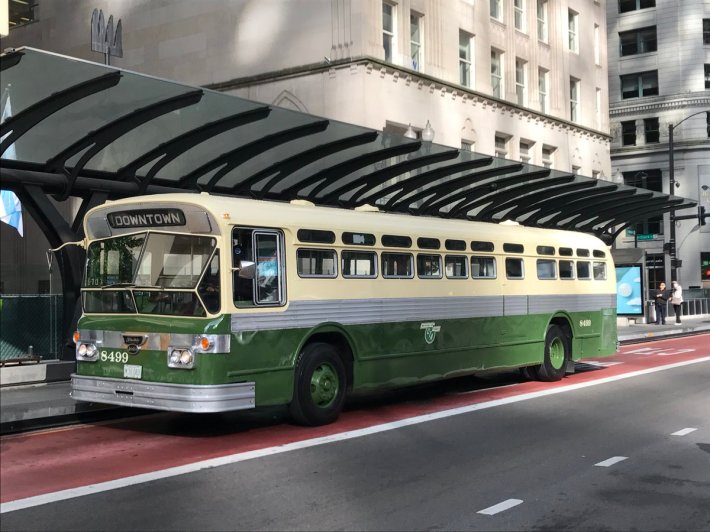
Your New Blue: This ongoing $492 million overhaul of the Blue Line O’Hare branch includes rehabs of stations built as far back as 1895, including the addition of elevators and public art at some stops, and the elimination of slow zones to cut up to five minutes off the trip from the Loop to O'Hare. Work on the stations at Damen, Western, California, and Irving Park through Cumberland is completed, while projects at Grand, Chicago, Division, Logan Square, Belmont, and Jefferson Park are ongoing.
Last month the CTA announced that Walsh Construction was awarded the $30.8 million contract for renovations to the Belmont and Jefferson Park stations. The $17 million Belmont project, in the gentrifying Avondale neighborhood, will get a large, Jetsons-esque architectural canopy for the terminal, and prepaid bus boarding will be implemented, but there are no plans for making the station wheelchair accessible anytime soon. The CTA says adding elevators at this location would cost an additional $70-90 million.
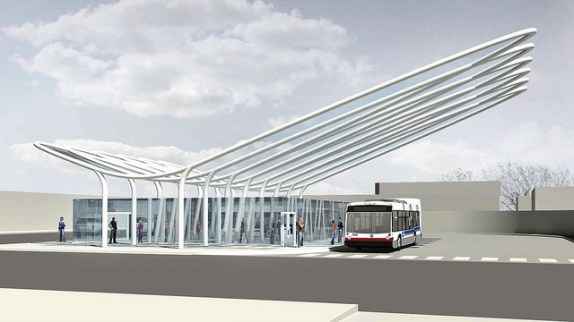
Highlights of the $25 million Jefferson Park rehab will include new canopies for the bus terminal and train station entry, and reconfiguration of the bus bays to better accommodate people with disabilities. The station is already wheelchair accessible. Work for both stops is expected to begin in early 2018, with construction wrapping up at Belmont in late 2018, followed by the completion of work at Jeff Park in 2019.
Wilson station rehab: This $203 million reconstruction project is converting the stop into a double-platform facility that will serve as a transfer between the Red and Purple lines. The new main station house opened last month, complete with an escalator and elevator. Large curving translucent platform canopies are completed, and work is slated to wrap up this year, including the opening of the second platform, the restoration of the 94-year-old north station house, the opening of a new entrance on Sunnyside, and unveiling of public art by Sri Lankan-British artist Cecil Balmond.
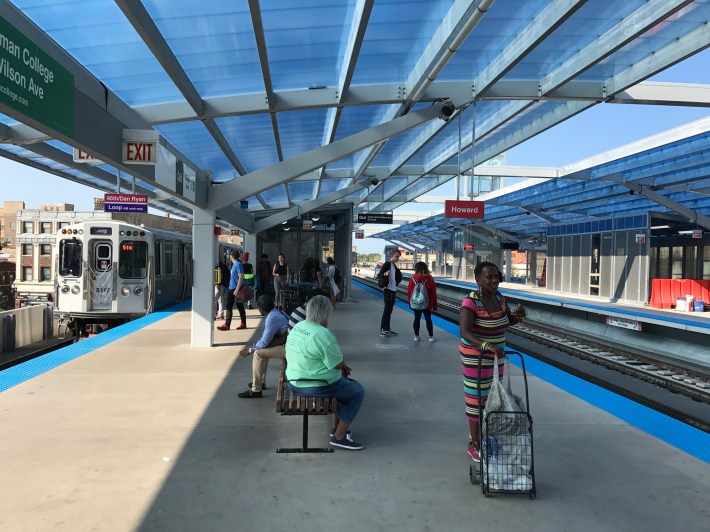
95th Street/Dan Ryan station reconstruction: Work began on this $280 million project in fall 2014 to improve one of the CTA's busiest stations, which serves the Red Line and many CTA, Pace, and intercity bus lines. A new south terminal is currently being built, with work scheduled to wrap up early next year, and the north terminal renovation is slated for completion in late 2018. The new station will include art by Chicago-based artist Theaster Gates, and officials have promised it will be "bright, airy, and light-filled.”
Garfield Green Line improvements: In September the CTA also awarded the $25.9 million contract to renovate the Garfield Green Line station, the oldest train stop in Chicago, to Walsh Construction. The project, which will cost a total of $50 million, is scheduled to begin in 2018 and be completed by 2019. The initiative will restore the original station house on the south side of Garfield Boulevard and will also include elevator and escalator upgrades and extensions to the platform canopies. Theaster Gates is partnering with the University of Chicago to design improvements to the inside of the old station house and the streetscape.
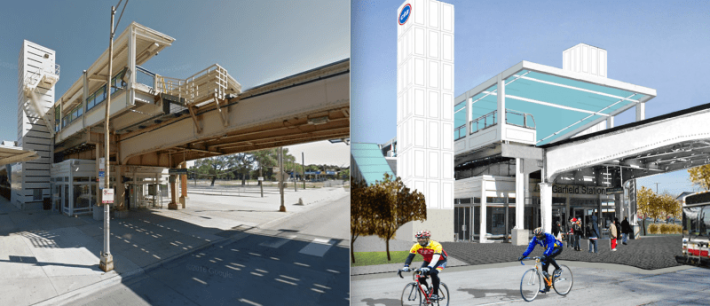
New Damen Green Line infill station: In February the city announced that it will build a $50 million Green Line infill station at Damen and Lake. Construction was slated to begin in 2018, and the station is scheduled to open in 2020. It will serve the United Center and the Kinzie Industrial Corridor, plus Near West Side and West Town residents.
The Red and Purple Modernization project: The day before President Obama gave his farewell speech at McCormick Place, his administration announced a parting gift for Chicago: about $1.1 billion in grants that, along with roughly $1 billion in local money raised via a new "transit TIF" district, will pay for the first phase of the CTA’s Red and Purple Modernization Project, a much-needed overhaul of these 'L' lines north of Belmont. Phase one includes rebuilding the tracks from Lawrence to Howard, upgrading signals, and reconstructing the Lawrence, Argyle, Berwyn, and Bryn Mawr stations to make them wheelchair accessible.
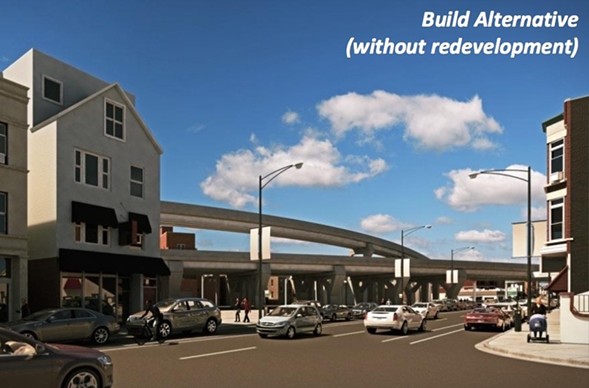
The project also includes the $570 million Red-Purple Bypass, better known as the Belmont flyover, an overpass designed to eliminate conflicts between Red, Purple, and Brown Line trains just north of the Belmont station. The agency says the bypass will allow them to run 15 more trains an hour between Belmont and Fullerton during rush periods, which will be crucial for addressing overcrowding on the Red Line as the north side’s population grows.
The South Red Line Extension project: A year ago the CTA released an Environmental Impact Study that was the next major step towards extending the Red Line south from the 95th Street terminal to 130th Street in Altgeld Gardens, something that the city has been talking about doing since the Richard J. Daley era. The transit agency has determined that the best route for the extension would be to run the tracks west on 95th Street to Eggleston Avenue (400 West), and then south along an existing Union Pacific-owned freight railroad right of way. Four new stations would be built at 103rd Street, 111th Street, Michigan Ave at 116th Street, and on 130th Street, at approximately 950 East.
The city has said that the extension could be built within a decade, with work starting by 2022, but the big question is where the money would come from. The CTA projects that the project would cost about $2.3 billion, and it looks like federal funding for transit may be scarce under the Trump administration.
